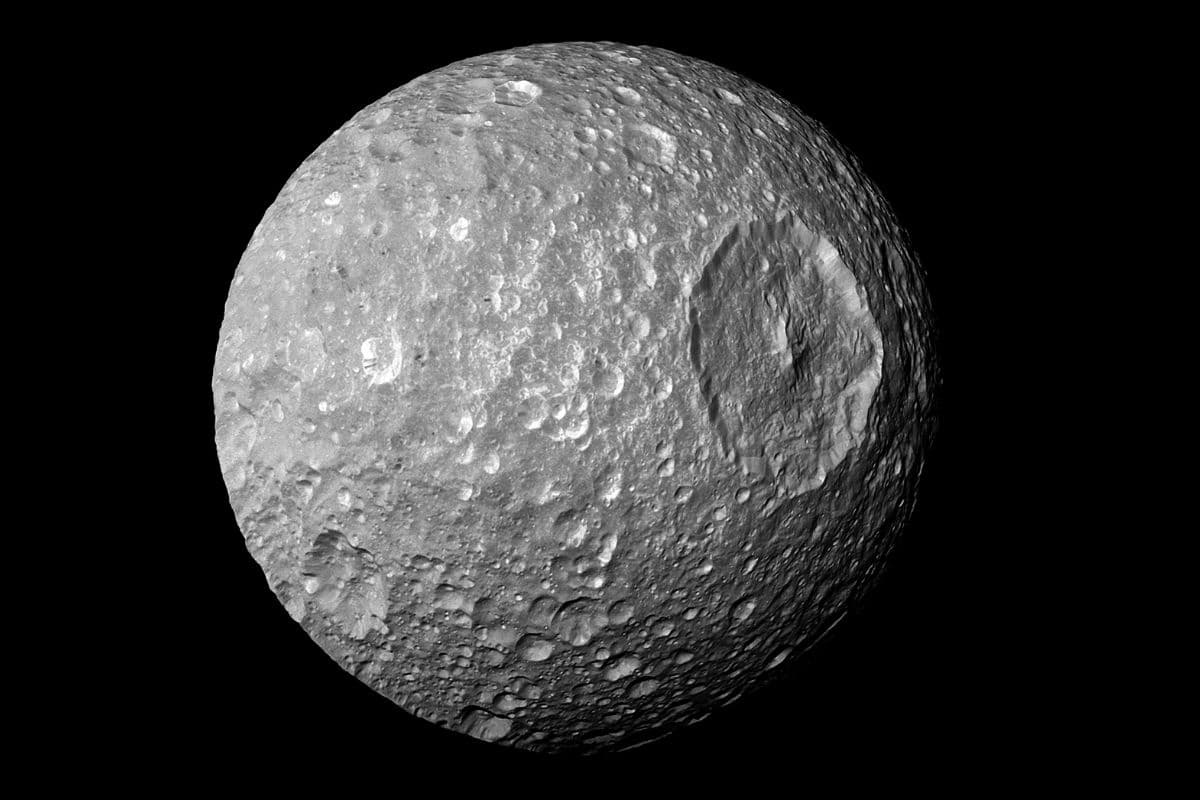
And that means there may be many more habitable worlds in our galaxy than previously thought.
Until now, Saturn’s small moon Mimas was thought to be a rather dull specimen. But nothing turns out to be less true. Researchers have discovered that the ‘Death Star moon’ may contain a real underground ocean. And that could change our view of the Milky Way galaxy forever.
Mimas is a pretty pocky moon. For example, the surface is covered with many small impact craters. The most notable feature of Mimas is a large impact crater called Herschel; to the discoverer of the moon. Mimas owes the nickname ‘Death Star’ to the huge crater that is rich in the moon and that looks a lot like the Death Star from Star Wars. The crater is about 139 kilometers wide.
Scientists wanted in the study prove that the small, innermost moon of Saturn is a frozen world. But surprisingly, they instead discovered compelling evidence that Mimas possesses a subterranean ocean beneath a 15- to 12-mile thick ice crust.
frozen block of ice
In the final days of the Cassini mission, the spacecraft detected a curious oscillation. And that often points to a geologically active celestial body, which may just be harboring a subterranean ocean. “Because Mimas’s surface is made up of a lot of craters, we thought it was just a frozen block of ice,” said researcher Alyssa Rhoden. “But it seems that the surface of Mimas has fooled us. If Mimas actually owns an ocean, the moon represents a new class of small, ‘hidden’ ocean worlds with surfaces that don’t betray the existence of an ocean.”
Underground Oceans
One of the most profound discoveries in planetary science of the past 25 years is that worlds with oceans under layers of rock and ice are common in our solar system. For example, consider Jupiter’s icy moon Europa and Saturn’s moons Titan and Enceladus. Even dwarf planet Pluto appears to have a subterranean ocean. Worlds like ours with an ocean on the surface have to be exactly in the habitable zone of a star so that the water does not freeze or evaporate. But underground oceans are found at much greater distances from the parent star.
Extraterrestrial life
The fact that Mimas now also seems to have an ocean inside, could mean that there are more oceans in the universe than previously thought. Because possibly other distant celestial bodies also harbor such subterranean waters. And that may also make the existence of extraterrestrial life a lot more plausible. “The discovery of Mimas has expanded the definition of a potentially habitable world in our solar system and beyond,” concludes Rhoden.
Research into Mimas’ underground ocean continues. “While our results support the existence of a subsurface ocean, it is challenging to reconcile the moon’s orbital and geological features with our current understanding of its thermal orbital evolution,” Rhoden said. So further research is on the horizon. “New models of its formation and evolution may also help us better understand Saturn’s rings and medium-sized moons,” Rhoden continues. “In addition, we may be able to find out whether the moons of Uranus also harbor oceans. Mimas is therefore an attractive target for further research.”
Source material:
“SwRI Scientist Uncovers Evidence for an Internal Ocean in Small Saturn Moon” – Southwest Research Institute
Image at the top of this article: WikiImages via Pixabay